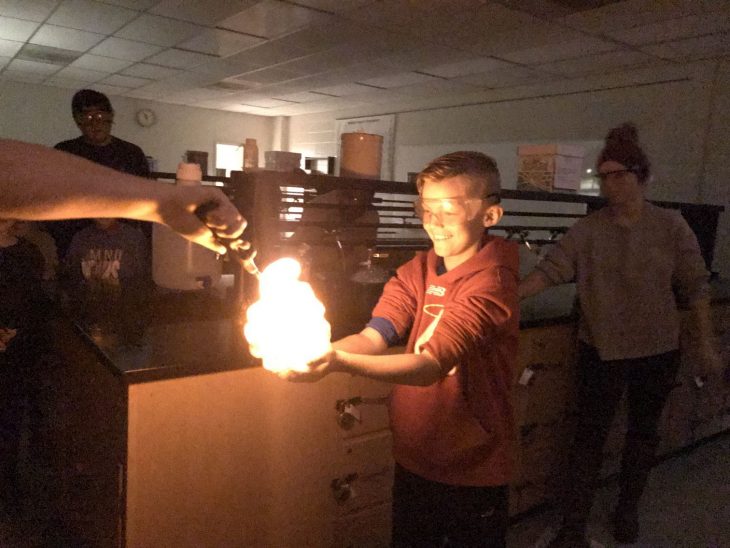
McMurry Inspires
McMurry University, per tradition, proudly hosted elementary school students for Tipi Village tours this past October. However, aside from the tipis, McMurry’s science department demonstrated biology and chemistry experiments to these young, aspiring hearts.
“This is the 11th year the chemistry department hosts chemistry experiments for the Jim Ned Lawn Elementary school fourth graders,” said Dr. Paul Pyenta, professor of chemistry and biochemistry. Dr. Pyenta is a professor as well as a father. As a father, he values the importance of introducing science to other children, as well as, his own kids. Answering his call as a professor and father, Dr.Pyenta, the chemistry department, and the chemistry club put a tremendous amount of effort to organize this activity.
There were ten chemistry experiments introduced to kids this year, including some hands-on experiments. McMurry student volunteers were trained, and they practiced for three rounds before running each station to ensure the children’s’ safety. Each station also demonstrated the principles of chemistry reactions to make sure kids could walk away with the sense of science after having fun.
Ernesto Valle Jr., a senior majoring in biochemistry and the president of the chemistry club, did an excellent job of contact coordination with the Jim Ned Lawn Elementary School. “We keep some same experiments but always introduce new experiments to the show every year,” commented Valle Jr. This year, Valle Jr. performed the “rainbow fizz” experiment, which uses the differences between the pH values of acid and base to show a rainbow pattern of colors. It was an easy experiment using fundamental materials, such as baking soda and vinegar, and it enticed children’s’ attention with the colors and bubbles produced during the process.
Anelisa Valenzuela, a sophomore majoring in biochemistry, participated as a volunteer for the extra credit her chemistry professor offered and for the fun time with the kids. Her experiment “elephant toothpaste” taught kids the function of the catalyst and exothermic reactions. By using the different food dye colors, kids were surprised with how catalysts can speed up the foam growing from the graduated cylinder to make colorful “elephant noses.”
Nichole Doyle, a junior majoring in biomedical science, also expressed her happiness when she saw the excitement from kids. Doyle helped run a biology station called “murder mysteries” for fifth graders. In this station, every kid got the chance to use a microscope to compare the different samples with the “murderer’s” sample. The samples included the fiber of clothes, hair, and fingerprints. Kids had fun cracking the criminal cases and making their fingerprint copies.
After the biology section was over, Doyle helped a chemistry station liquid nitrogen. In this station, daily subjects such as crackers, flowers, bananas, and rubber balls were frozen by liquid nitrogen, which is -320.44°F. Everyone had the chance to eat the frozen crackers. Because of the extreme temperature difference, kids could see the smoke coming out of their mouths and noses while eating the crackers. Kids were also shocked when they saw a frozen banana could be used to hammer nails into wood.
Methane bubble is the most dangerous experiment overall. In this experiment, after kids wet their hands and arms, they got to hold some methane bubbles. A well-trained student volunteer would light the bubbles, so kids could hold the fire for one second and push their hands back quickly to kill the fire. It may sound or look scary, but it is safe. Fire can burn people, but by applying science, it takes time for water to be heated up. The unheated water provided temporary protections for the skins. Therefore, when kids shake the fire quick, theyonly feel warmth, and their hands suffer no type of burn. All of these experiments held safety as their number one priority at all times.
McMurry witnessed the surprise and excitement from these young faces, as well as, the appreciation from forty-eight students, their teachers, and their parents this year. More than just the fun, the seeds of science have been planted in these young hearts.
